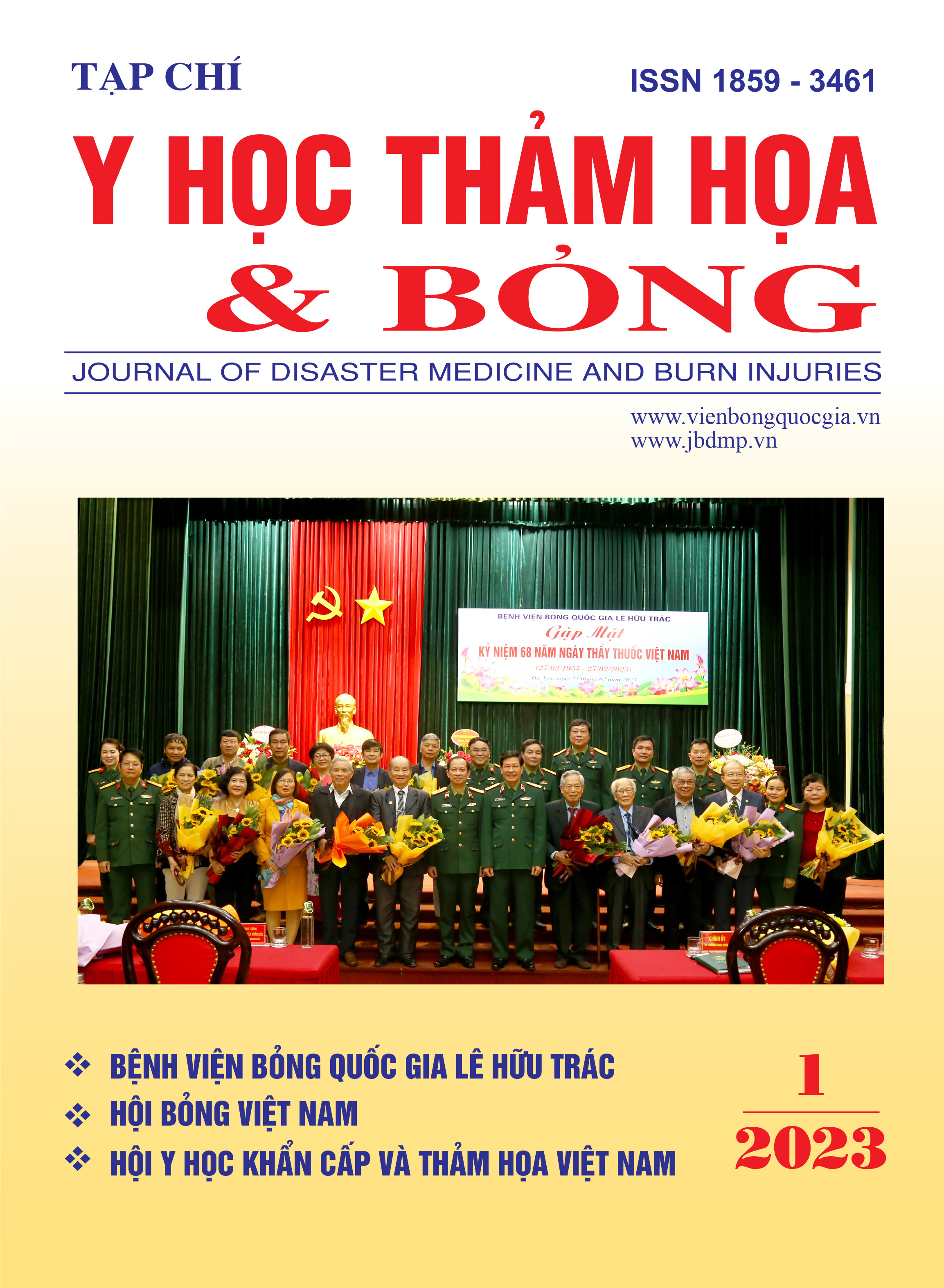Initial assessment of postoperative results for autologous rib cartilage auricular reconstruction using stages techniques for microtia patients
Main Article Content
Abstract
Introduction: The history of auricular reconstruction spans several centuries, including the creation and development of numerous different techniques. Autologous costal cartilage is the most commonly used material. We noticed that there is currently no research on autologous rib cartilage repair in Vietnam, except VietDuc University Hospital which is completed in a single stage. As a result, it is crucial to research to assess this surgical outcome.
Subjects and methods: At the Department of Maxillofacial-Plastic-Aesthetic Surgery, 10 congenital microtia patients who met the criteria for the procedure underwent a one-stage autologous rib cartilage reconstruction procedure in the period from February 2021 to November 2021.
A prospective and retrospective study combined with cross-sectional descriptive research. Medical statistical approaches based on the SPSS 16.0 program.
Results: Surgery patients are 16.3 years old on average, and 80% of them are men. It’s 50% left ear microtia and 40% on the right. 80% of all cases are concha microtia. 100% of the newly generated auricular axis was correctly constructed after one month, or it was 5 - 10 degrees off. The posterior ear groove is visible in 80%. The average time for a procedure is 9.2 hours. 60% of patients have skin tones that match those of the face in the anterior. After six months, the results are 100% accurate in-ear axis position, 70% showing auricular features clearly, and 80% successful in preserving symmetry. The color of the front of the ear matches the skin tone of the face up to 90%. No subsequent records of hair development in the anterior aspect of the ear.
Conclusion: The technique of one-stage auricular reconstruction with autologous rib cartilage uses an endoscopic system to harvest the superficial temporal fascia flap in order to cover the framework. Patients are very satisfied with postoperative results recorded at 1 month and 6 months or later times because of aesthetic appearances and anatomical details.
Article Details
Keywords
Congenital microtia, autologous costal cartilage
References
2. Preferential Associated Malformation in Patients With Anotia and Microtia - PubMed. Accessed January 4, 2023. https://pubmed.ncbi.nlm.nih.gov/ 30616309/
3. Deng K, Dai L, Yi L, Deng C, Li X, Zhu J. Epidemiologic characteristics and time trend in the prevalence of anotia and microtia in China. Birth Defects Res A Clin Mol Teratol. 2016; 106(2):88-94. doi:10.1002/bdra.23462
4. Han SE, Lim SY, Pyon JK, Bang S ik, Mun GH, Oh KS. Aesthetic auricular reconstruction with autologous rib cartilage grafts in adult microtia patients. J Plast Reconstr Aesthetic Surg JPRAS. 2015;68(8):1085-1094. doi:10.1016/ j.bjps.2015.04.016
5. Cui C, Hoon SY, Zhang R, et al. Patient Satisfaction and It's Influencing Factors of Microtia Reconstruction Using Autologous Cartilage. Aesthetic Plast Surg. 2017;41(5): 1106-1114. doi:10.1007/s00266-017-0907-y
6. Soukup B, Mashhadi SA, Bulstrode NW. Health-related quality-of-life assessment and surgical outcomes for auricular reconstruction using autologous costal cartilage. Plast Reconstr Surg. 2012;129(3):632-640. doi:10.1097/PRS.0b013e3182402ca7
7. Akter F, Mennie JC, Stewart K, Bulstrode N. Patient-reported outcome measures in microtia surgery. J Plast Reconstr Aesthetic Surg JPRAS. 2017;70(3):416-424. doi:10.1016/j.bjps. 2016.10.023
8. Widodo DW, Mars R, Suwento R, Alviandi W, Oriza IID, Bardosono S. Satisfaction and health-related quality of life of patients with microtia following reconstructive surgery using the Nagata technique. PloS One. 2021; 16(9): e0256652. doi:10.1371/journal.pone.0256652
9. Discussion: Single-stage autologous ear reconstruction for microtia - PubMed. Accessed January 4, 2023. https://pubmed.ncbi.nlm.nih.gov/ 24572856/
10. Reinisch JF, Lewin S. Ear reconstruction using a porous polyethylene framework and temporoparietal fascia flap. Facial Plast Surg FPS. 2009;25(3):181-189. doi:10.1055/s-0029-1239448
11. Anthropometric Assessment of the Normal Adult Human Ear - PubMed. Accessed January 4, 2023. https://pubmed.ncbi.nlm.nih.gov/29963423/
12. Auricular reconstruction with porous polyethylene frameworks: outcome and patient benefit in 65 children and adults - PubMed. Accessed January 4, 2023. https://pubmed. ncbi.nlm.nih.gov/20885242/


